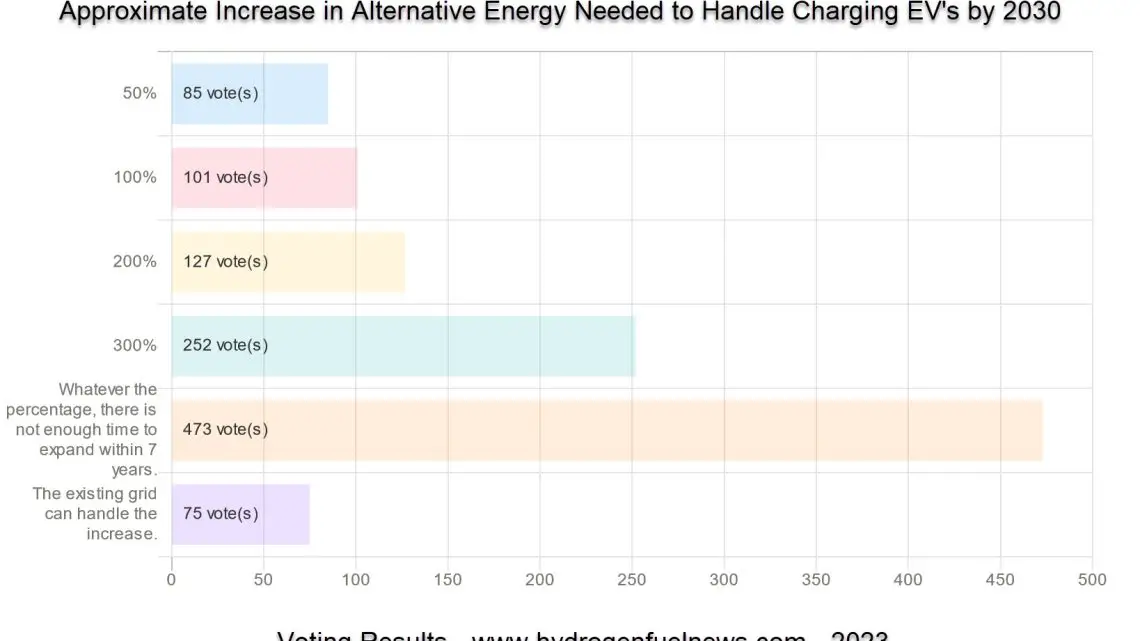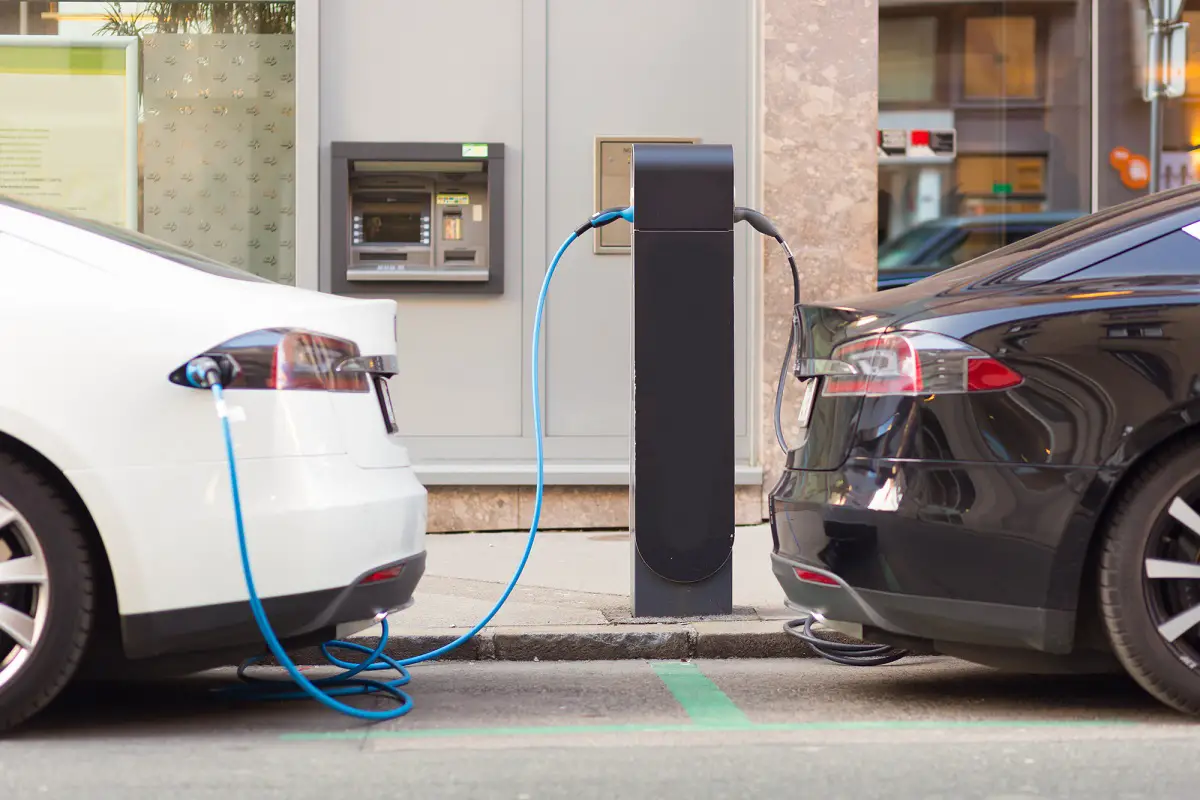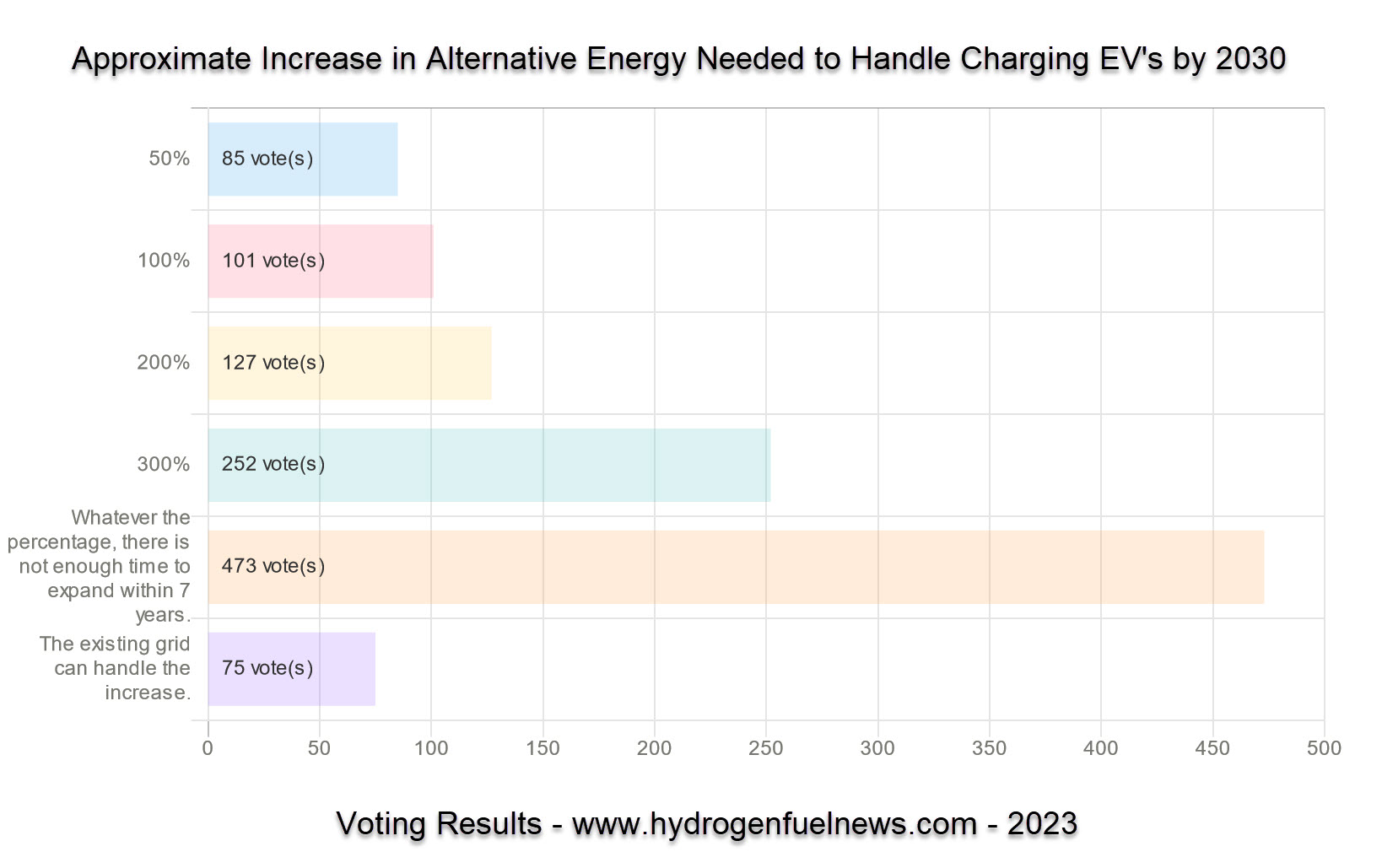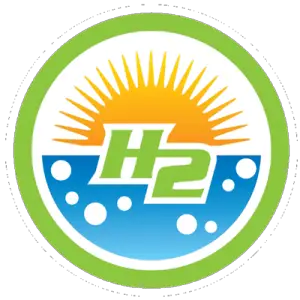
40% Of consumers say alternative energy capacity inadequate for EV charging
May 22, 2023A recent poll showed that there isn’t enough time for cleaner energy sources to keep up with EV demand.
While electric vehicles are often thought of as zero-emission because they don’t have a tailpipe, unless they operate on electricity produced using clean alternative energy sources, drivers could be shifting the source of their carbon emissions from one place to another.
Battery electric vehicles will greatly increase the demand on electrical grids throughout the world.
In a recent Hydrogen Fuel News poll, participants were asked how much of an increase in alternative energy would be required to meet the electricity demand from EV charging by 2030. The largest number of respondents indicated that regardless of how much of an increase the grid would need in its capacity, there wouldn’t be enough time to meet that demand with alternative energy sources by 2030.
There were 1,113 total respondents to the survey. Among them, over 42 percent said that in terms of necessary increase in alternative energy to meet the electricity charging needs of EVs by 2030, “Whatever the percentage, there is not enough time to expand within 7 years.” This reveals a grim outlook from consumers regarding the capacity of the grid by the end of the decade, and the practicality of EVs within that same span of time.

The poll revealed that most people believe a very large amount of alternative energy will be required.
Among the respondents, 7.6 percent (85 participants) said that they predicted that the current electrical grids would need another 50 percent capacity boost to meet EV charging demand by 2030.
Another 9.1 percent (101 participants) thought that figure was closer to 100 percent, 11.4 percent (127 participants) believe a 200 percent capacity boost will be necessary, 22.6 percent (252 participants) thought a 300 percent capacity increase will be needed, and 42.5 percent of participants felt that no matter how much more power would be needed, the next 7 years will not be enough time to install it.

Only 6.7 percent of respondents (75 people) believed that the current grid capacity would be adequate.
Electric Grids Under Pressure: Summary of Challenges and Demands from EV Adoption
-
More than 50% of all new car sales in the U.S. are expected to be electric by 2030, raising concerns about the grid’s ability to handle the surge in demand.
-
The American electric grid, while capable of supporting EV growth, will require significant upgrades, such as modernized infrastructure and investment in smart grid technologies, to prevent power outages and instability.
-
Charging demands may necessitate up to 20% additional power-generation capacity by 2030 unless effective strategies, like incentivizing off-peak charging, are implemented.
-
Research from MIT highlights that placing EV charging stations strategically and adopting delayed charging systems can help reduce grid stress and eliminate the need for costly new power plants.
-
Evening charging peaks remain a critical issue as they coincide with other high electricity demands, potentially leading to grid overloads without intervention.
-
Accelerated EV adoption poses risks to the aging grid infrastructure, emphasizing the importance of proactive planning and collaboration among policymakers, utility providers, and the private sector to meet growing electricity needs.
Grim outlook
It is clear that as popular as EVs are, there are uncertainties from consumers regarding their viability in the near future due to demands on alternative fuel sources.



 With over 15 years of reporting hydrogen news, we are your premier source for the latest updates and insights in hydrogen and renewable energy.
With over 15 years of reporting hydrogen news, we are your premier source for the latest updates and insights in hydrogen and renewable energy.
Replace the natural gas burnt in power stations with clean green hydrogen.